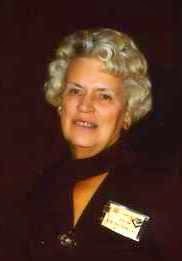The famous statues on Easter Island have long been a mystery. Not only is it strange how such large statues made their way onto the remote island so long ago, but there is very little tradiaiton or legend known about them.
Nimoy starts by discussing legends of the past around Easter Island. The island is halfway between South America and Tahiti. Nimoy says it may be the loneliest inhabited place on Earth. He tells us about the Dutch traders who first encountered it in the early 1700's. The island has less than 1000 people today and basically one village. Most of the indigenous population was wiped out by disease. It is officially a possession of Chile, but that would be a long trip across the Ocean.
As Nimoy points out, no one today knows why, but the ancient people of Easter Island somehow erected these giant statues that have become very famous.
The only village on the island, Hanga Roa, is where most of the people actually live. There is a small port for ships and a small airport that only provides seasonal service.
Nimoy spends some time discussing the size and aesthetic of the statues. He tells us about the statues, "a small one is equal to weight of a thousand men and stands as tall as a two story house". They cover all the island and each have different personalities on display. Why so many? Why with these appearances and sizes? Also, some seem to have been systematically massacred. Just as with their construction, no one knows why.
We are taken to a quarry that is an extinct volcano on the island. Foremost in the quest to answer the many questions of Easter Island is Dr. Edmundo Edwards, a Chilean Archaeologist. Nimoy tells us that 500 years earlier workers assembled here picking away at the volcanic rock, and then suddenly stopped. Cast off pieces not yet complete are still there in the quarry. Over time, they have even re-merged with the crater. Tools lie in their place, undisturbed. Why did they stop and just leave everything? Bizarre!
We are told that one of the few legends that does exist about the statue is that they were Gods who emerged from the quarry and marched toward the sea, stopping where they currently reside. Then they turned their backs to sea and cast their "mana" or power over the land. They believe that opening the eyes of the statues released the mana. Interestingly enough, not all of the statues have their eye lids "opened". Those that did, were the ones that were massacred. Its implied that this was invented by the people as the only way to explain how these statues could have gotten into place.
We next meet Mario Alabala who is leading the work to restore the statues. This work is detailed, and is painstaking. One theory is that the stones were rolled over land to get to the sea. Nimoy asks how these people developed such an advanced engineering skill so early? Local engineer Robert Forster has another theory about a type of fulcrum that may have been used.They spend some time conducting an experiment to prove it, and it fails. Nimoy uses this to remind us that if we can't figure out how it was done, how did they figure it out?
We are next told that several written tablets were found on the island. They contain pictograms in a language that is unknown.
Anthropologists believe they tell a dark and bloody tale. We are not told why they believe this if the language is unknown? I guess its because there are stories of a massive civil war on the island in the past. Edmundo believes that over population may have driven the people to cannibalism and civil war. The locals tell of a belief in a bird-like God. Their legend has it that on the first day of Spring, men would swim to a rock offshore and look for the egg of the God. The first man back with the egg in his mouth was proclaimed King for one year. This time is known as the cult of the Birdman.
The oral traditions provide the best clues and so now we hear some of these. There was a war between the "long ears" and the "short ears". The story tells of heroic battles and conquests. The short ears rose from slavery and killed all of the long ears who had enslaved them. A minute or so is spent with the camera shaking violently with images of the statues giving us a sense for this war. Certainly whatever happened and why was bloody and tragic.
"The endless waves, of course, have seen it all. They saw brave people put their hope and faith in mighty Gods carved from stone and they saw the failure of those Gods to protect them. It was that failure that may have lead to the massacre of the stone giants." Nimoy sums it up eloquently as usual.
This was a good episode. Plenty of images from the island, good history and creepy stories. It held my interest and makes me want to read more about Easter Island!
You can watch this episode "The Easter Island Massacre" below.















































